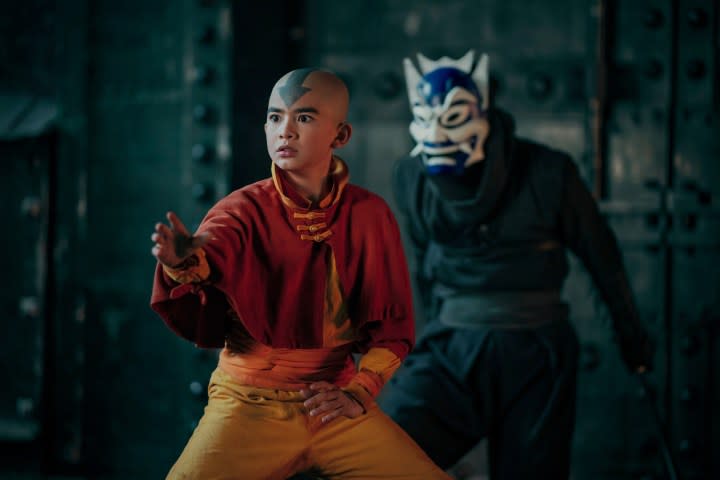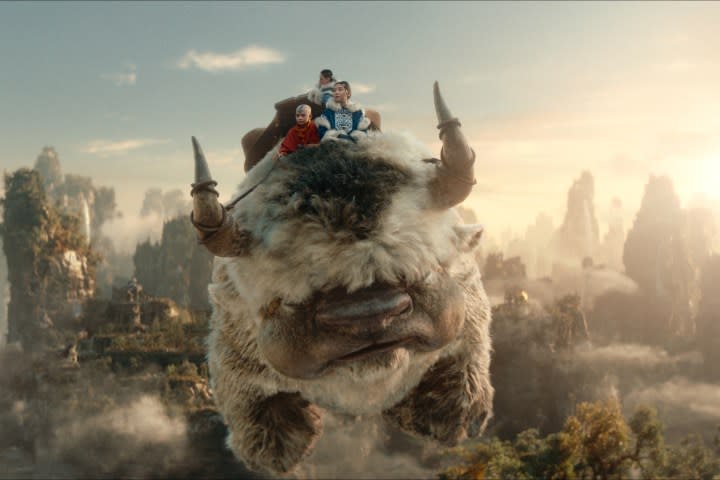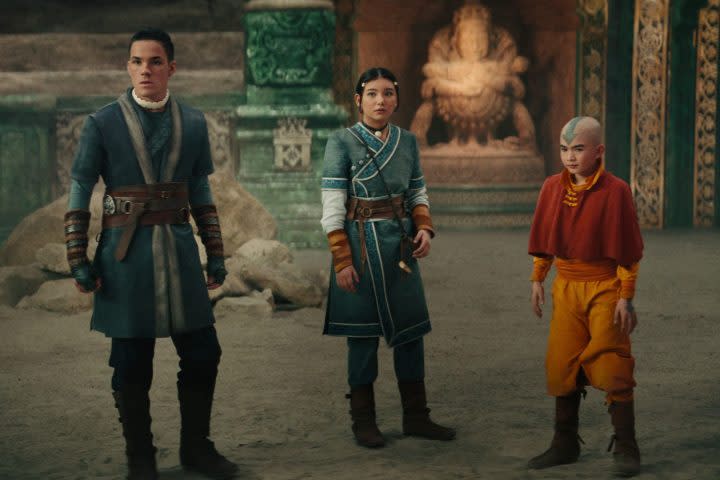What Netflix’s live-action Avatar: The Last Airbender gets right about the animated series

- Oops!Something went wrong.Please try again later.
Netflix’s Avatar: The Last Airbender isn’t a wholly successful adaptation of the beloved animated series of the same name, nor is it a complete disappointment. It is, in every way, an improvement upon M. Night Shyamalan’s oft-criticized 2010 The Last Airbender film. That’s due in no small part to the clear love and admiration that the creative team behind the new live-action series has for its animated source material.
The Netflix show makes a lot of mistakes over the course of its eight episodes, but it also demonstrates a clear understanding of what made the original Avatar: The Last Airbender so great in the first place. Despite all of its flaws, the series ultimately gets more right than wrong.
A vibrant world

If there’s one thing no one could rightly accuse Netflix’s Avatar: The Last Airbender of being, it’s colorless. From its tangible costumes to its CGI backgrounds, the series is almost colorful to a fault. In nearly every one of its frames, the show looks like a cartoon come to life — one bursting with bright shades of orange, blue, red, and green that are mostly pleasing to look at, if occasionally garish. While the live-action Last Airbender series doesn’t always deliver fully convincing or even beautiful CGI renderings of its fictional kingdoms and palaces, its world still feels alive at every turn.
The same can, of course, be said of the original Avatar: The Last Airbender animated show, which invites viewers into a world that seems lived-in, ancient, and full of endless surprises and details in every one of its episodes. Netflix’s adaptation ironically doesn’t ever quite match its source material’s still-astonishing level of immersion, but it does deliver a live-action interpretation of the Last Airbender world that is just as vibrant and bright as it should be.
An endearing cast of characters

What makes the original Avatar: The Last Airbender series still so rewarding to revisit even 16 years after it ended is how beautifully it marries its fantasy world-building, pulse-pounding action sequences, and introspective character work. At no point throughout its three-season run does the series ever let its characters get lost in the midst of its spectacle or operatic overarching story. For all of its missteps, Netflix’s Avatar: The Last Airbender similarly avoids making that mistake.
The live-action adaptation’s first season invests just as much time into developing its core characters as it does its various kingdoms and set pieces. Across its eight episodes, the series gradually builds out the pasts and inner lives of both its heroes and villains, and it even goes so far as to reveal certain things about their backstories earlier than the original animated show did. These decisions all pay off, and thanks to its well-cast ensemble of actors, the Netflix series manages to establish an assortment of characters, both morally good and bad, that viewers could easily stick with for multiple seasons.
An epic, tragic story

One of the most noteworthy things about Netflix’s Avatar: The Last Airbender adaptation is how quickly it leans right into the full tragedy of its source material’s story. The series doesn’t shy away from the horrors of the Fire Nation’s campaign against the Earth, Water, and Air nations, and it forces Aang (Gordon Cormier) to repeatedly grapple with the ramifications of his 100-year disappearance. The show’s first season also goes out of its way to showcase the global scope of its story by visiting countless, disparate locales and introducing enough supporting characters to offer an extensive, impressively panoramic view of The Last Airbender‘s fictional world.
At times, the series’ shockingly dark, somber tone seems incongruous with its colorful aesthetic and absurd sense of humor. Its inevitable budgetary constraints result in some of its locations looking much worse than others, too. However, the show’s commitment to embracing both the darkness of its story and the full size of its world is what allows it to effectively communicate the full weight and dramatic stakes of Aang’s journey.
The live-action Avatar: The Last Airbender series isn’t as awe-inspiringly well-constructed as its animated predecessor. Its frequently absurd character designs and rushed handling of certain storylines, in particular, prevent it from reaching the level of greatness that many fans may have hoped it would achieve. If there’s one thing the series’ first season proves, though, it’s that Netflix’s Avatar: The Last Airbender does understand both the appeal and strength of its source material, which is more than can be said for a lot of Hollywood’s past live-action adaptations of anime and animated series and films.
Season 1 of Netflix’s Avatar: The Last Airbender is streaming now.

